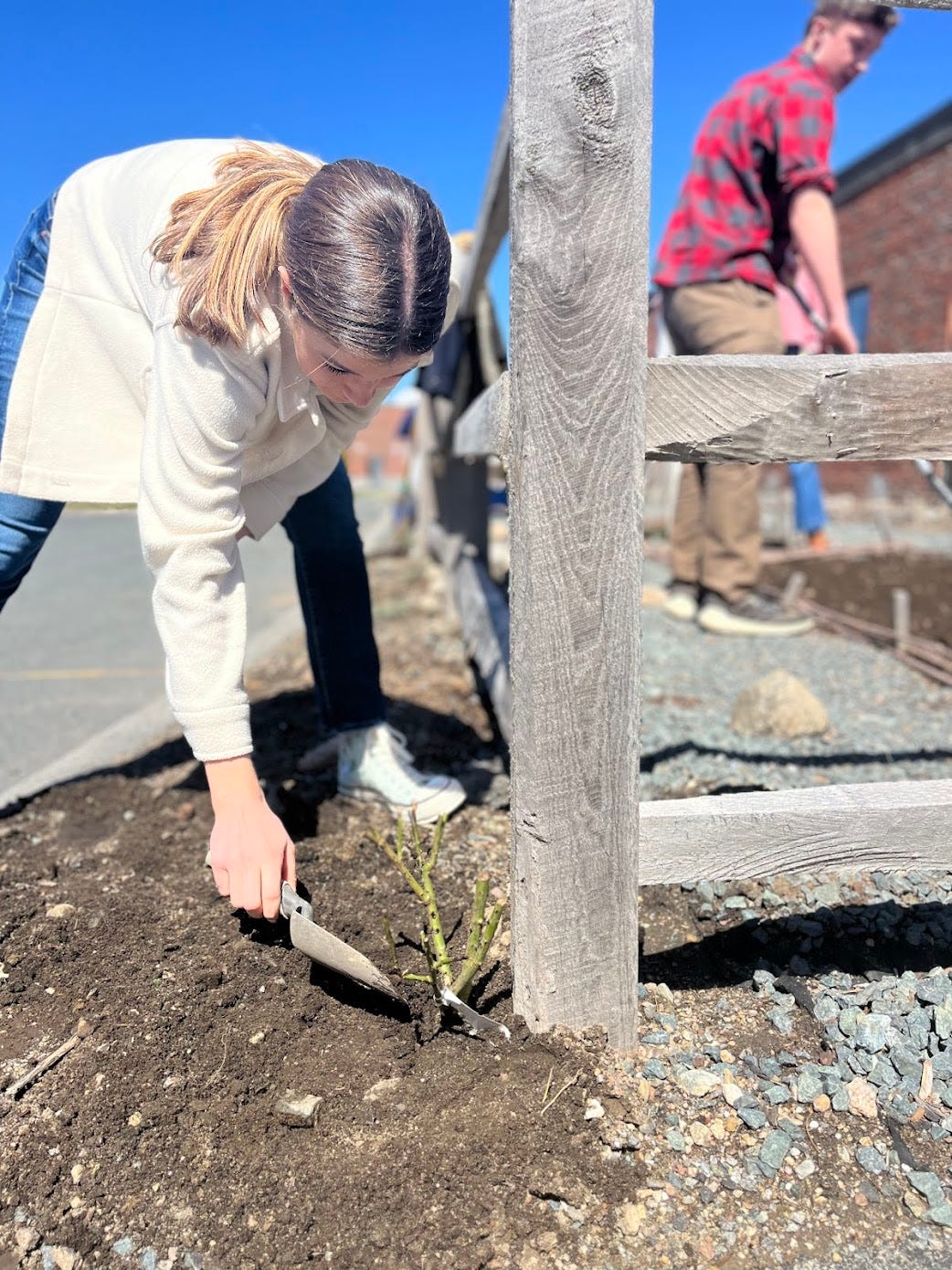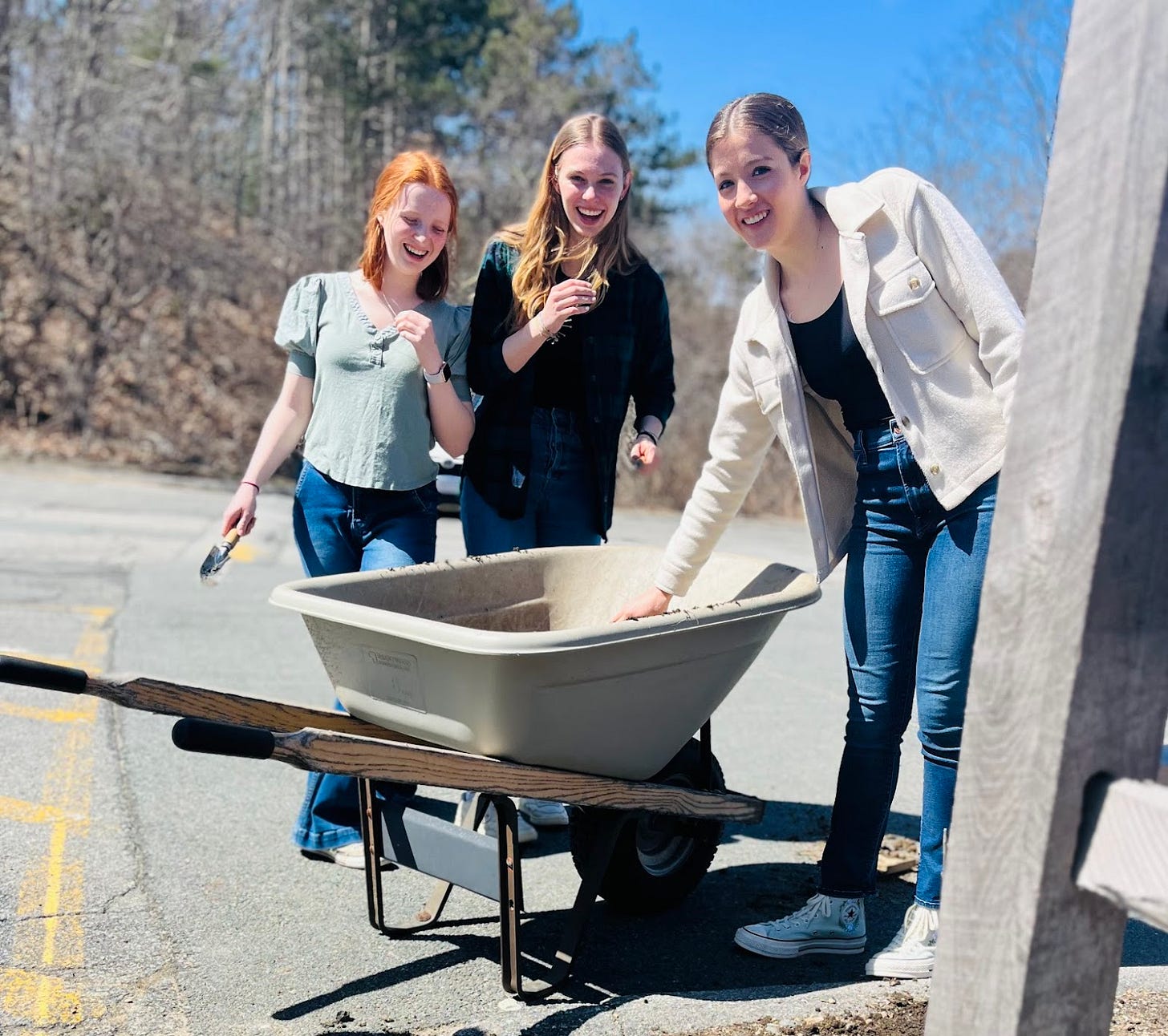Starting a new garden is a thrilling thing. I can still remember the feeling of walking through the blank, almost grassless backyard of our new house the day after we closed on it eight years ago, pondering the angle of the November light and beginning to make plans. But while the excitement of sketching out a future garden is great, there’s something even more magical about an established one.
Gardens are things that cannot be rushed. Even if you have the money to buy mature plants and the know-how to coordinate them well, it’s impossible to recreate the atmosphere of a planted space that’s mellowed into maturity. There’s a wise, settled spirit to such places: our tending to them leaves physical marks, to be sure, but it also transfers a kind of memory that’s palpable in the lay of the land, the trimming of the hedges, and the sequenced cycle of the blooms.
And though we’re hardly a heritage property, the Classical Roots Vegetable garden has begun to take on an established personality of its own. The beds have been renewed and repaired several times, the fence has weathered into a patinaed gray, and the cherry trees are past head height. We’re therefore at that lovely stage of a garden’s life where we can start filling in the edges, making purchases that will improve the quality of life instead of merely taking care of essentials.
Accordingly, I ordered four iceburg climbing roses to be delivered this spring. We already have two such roses trellised against the brick walls at the back of the garden and, acting according to the design principle of echoes and rhythm, I thought it would be lovely to plant a second group of them against the front posts of the fence. Roses are famously tough plants—tough as old boots even though their flowers are very delicate—so they should have no trouble surviving this relatively harsh placement between the parking lot and the foot of a fence. The idea is to train them along the posts and slats and trim off any excess. Over the years, this strategy will result in entirely rose-clad fences, as if they were constructed entirely of roses. The foliage will also provide additional cover for birds, the thorns will discourage rabbits, and the flowers should bloom from June through late October, adding fragrance and visual interest.
The warm spring weather always draws out some new recruits, and a few new Seniors joined us to sift the compost and do the planting. Slightly hesitant at first, they quickly warmed to their work and got their hands dirty. Roses love a good mulching of compost in the spring and autumn and, soon enough, all four of them were in the ground, fed, and watered. Though the trees around were still leafless and nothing but the acid yellow of forsythia was blooming—admittedly not my favorite flower—there was a great deal of warmth and cheer in the atmosphere. Laughter rang out across the garden and the sun felt good on our backs: a happy memory I will always associate with these particular roses.
I never cease to be impressed by the intense sense of presence that comes from gardening. If I could reduce the wide and varied dilemmas of modern life to a phrase, I’d say it comes down to feeling out of sync with the moment, eternally elsewhere. As Hamlet put it, the time is out of joint, which is why planting a living thing has the vital effect of resetting us. It is a return to earth and to form, a grounding force. As the garden and I grow a little older, I treasure that feeling more and more.
Like what you’re reading here? The best way to support the Classical Roots Program is to spread the word. Help us turn school inside out:





